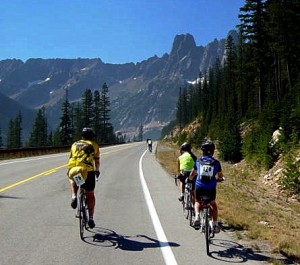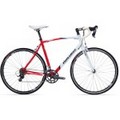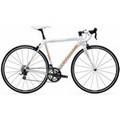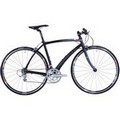 While riding my bike in Boston yesterday, I began to think about how much urban biking feels like touring sometimes. I have a lot more experience biking in Boston than I do touring anywhere, but even on the few tours I’ve completed I learned how road etiquette works.
While riding my bike in Boston yesterday, I began to think about how much urban biking feels like touring sometimes. I have a lot more experience biking in Boston than I do touring anywhere, but even on the few tours I’ve completed I learned how road etiquette works.
Of course, on a commute, you have no loyalty or connection to the other riders aside from the fact that you’re both on a bike. For many people, that’s enough, and they take care to watch out for one another.
On a tour, everyone is in it together and many people are in large groups of family members or friends. It’s important to watch out for each other on long tours, and that’s actually one of the main reasons touring exists.
If bikers could be safe on busy roads alone, maybe they wouldn’t need a group to travel across the country. However, doing so makes everyone more visible in areas where bikers do not commonly ride.
While thinking about this, I realized that there are actually a few ways that urban biking etiquette mirrors that of touring, and it allowed me to look at biking on the city streets a little bit differently.
How Commuting Bike Etiquette Mirrors Touring Etiquette
During rush hour, I’m usually stuck in a long line of bikers on my way to or from work. People leave and join the line randomly, but there are always at least five people ahead and a few behind every morning.
No one has to talk to each other or help each other at all, but it is courteous to do so in some situations. I’ve seen all of the following happen on the road, and each is also applicable to tour etiquette.
Warn Cyclists Behind You if You’re Approaching Dangerous Conditions
In the city, there’s no shortage of smashed bottles or piles of trash in the bike lane. Only a single morning when there was a huge crowd did I ever hear anyone yell out to warn those behind her, but even a grandiose motion will do.
If you are approaching glass, a broken down car, trash or any other obstacle on your tour, definitely yell out to the cyclists behind you. There could be people far back that don’t see you move out of the way, and you could save them a lot of trouble.
If you yell out, you might spur a chain reaction so that everyone also yells out behind them and the entire group is aware. Since riding conditions are usually denser in the city, it’s usually possible to know when to move because the person in front of you will make a drastic swerve to the side. It’s best to prepare to do the same.
Warn Cyclists Ahead of Cars Coming From Behind
This is definitely not necessary in the city, but that’s only because it’s easy to tell when cars are coming. However, if cars could not be easily heard from a short distance ahead, warning those ahead would probably be more popular.
On a tour, people could be really far ahead and have no idea that a car is coming. Knowing when a car is approaching will allow them to prepare by sticking closer to the side of the road and not making any sudden passes.
When the person in the back yells ahead that a car is slowly approaching, each rider on the tour can do the same and eventually the person in the front will be aware before the car is even in sight.
Let Other Cyclists Know When You Are Passing
This is extremely important in any type of cycling situation, and it is very popular in the bike lanes of Boston.
As long as no cars or cyclists are coming up on your left, it’s perfectly acceptable to pass someone in front of you that isn’t keeping up the same pace. However, you should loudly and clearly yell to the person you are passing and warn them you are doing so.
By warning them, they’ll know to keep a steady pace or even slow down until you’re back in the line. Otherwise, they might unknowingly speed up and keep you in a dangerous position to the left.
Especially when cars are an issue, passing quickly and efficiently is imperative to your safety. Let other cyclists know so that you don’t spend too much time in the vulnerable position.
Never Stop Suddenly or Dismount In the Bike Path
This is one of my biggest pet peeves. On my usual route to work, I need to go over the Longfellow Bridge, one of the prettiest and iconic bridges that links Cambridge and Boston.
It is a tourist trap, and the views are admittedly very scenic, especially during rush hour when the sun is rising or setting. Therefore, people biking Boston for fun often feel the need to stop and take photos.
There have been far too many times when I had to swerve at the last minute because of someone stopped in the bike lane with both feet on the ground taking a photo. Since the bridge is a slight hill, it’s difficult to see these people in advance over the apex.
If you need to stop while touring, it’s extremely important that you pull off to the side of the road first or at least give bikers behind you a very obvious warning. Once you’re stopped, pull yourself and your bike off of the road as soon as possible.
Even if you’re hurt and moving is painful, getting out of the way will save you from even more pain when a biker runs you over. Stopping suddenly and hanging out in the bike path are two major pieces of advices for people trying not to be the black sheep of a bike tour.
Ride in a Single File Line (Most of the Time)
There are definitely streets in my area that get desolate after midnight. I’ve spent many summer nights with groups of friends riding around in packs and chatting all the way home.
When there are definitely no cars around, it’s okay to ride next to a friend or even two or three. Though, it’s important to get back into a single file line in high traffic areas.
On your tour, there will always be stretches where few cyclists and drivers are, and double or triple file lines are fine. However, make sure you always default to a single file line until you are positive that wider lines are safe.
Leave a Safe Distance Between the Cyclist Ahead of You
There is nothing more frustrating then getting stuck behind a slow cyclist on my way to work, but even still I have to remind myself to keep a safe distance.
If you’re behind someone too slow, pass him or her. Never tailgate them in an attempt to speed them up. It will make them nervous and they could make a mistake, which will leave both of you in a pile on the ground.
Use good judgment when deciding how much space to leave. If you’re traveling at a pace of five miles per hour, a few feet that measure the length of your bike is fine because you’ll have time to stop. If you’re going faster than twenty miles per hour, leave much more room in case they suddenly stop.
Biking in the city in a line of complete strangers is certainly a different experience than biking in a large group of fellow tour riders. However, there are definitely a few pieces of etiquette that can be seamlessly applied to both.
To recap, the similarities include:
- Warn cyclists behind you of dangerous conditions
- Warn cyclists ahead of you of cars
- Let others know if you are passing
- Never stop suddenly
- Never get off of your bike in the bike path
- Keep a single file line
- Leave a safe distance between each cyclist
By adhering to these standards both on tour and on urban commutes, you will have a safer experience and avoid being the incompetent cyclist that caused an accident.
Help Support Bicycle Touring Guide
Hey there! Like what we’re doing? Then help support us. Just do your online shopping through one of our links and we’ll get a small commission for anything you buy. And you don’t even pay anything extra. We need beer (and writer) money! Thanks!
Here are some links to popular places to get bike gear online:



